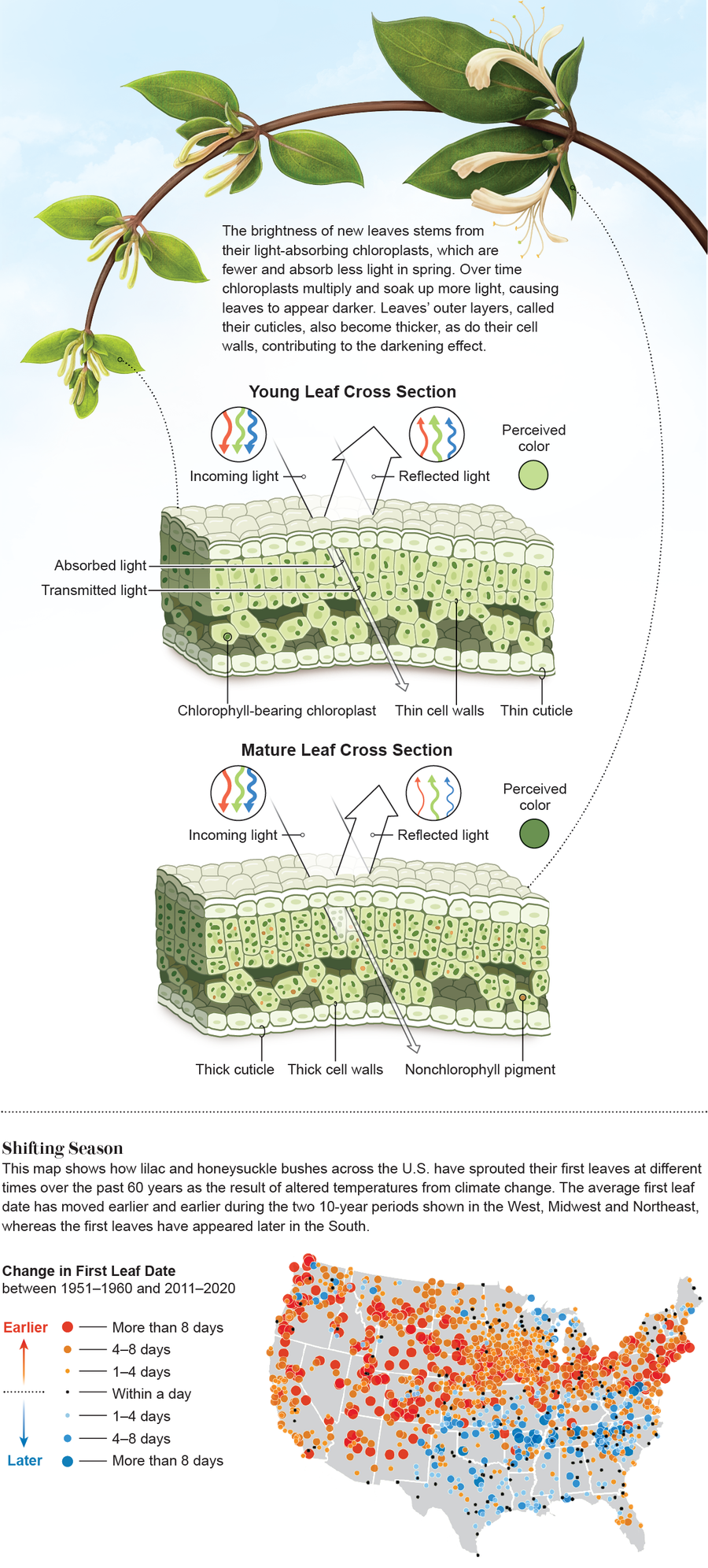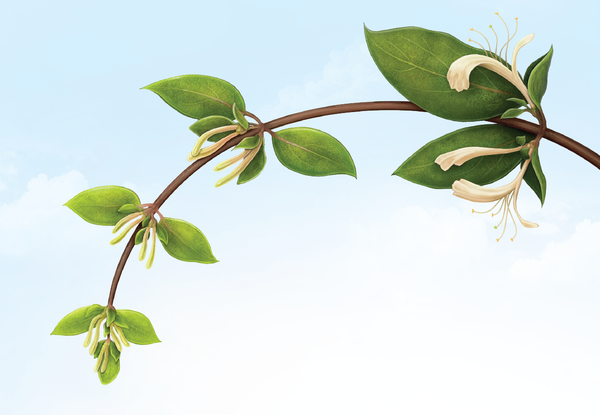On supporting science journalism
If you're enjoying this article, consider supporting our award-winning journalism by subscribing. By purchasing a subscription you are helping to ensure the future of impactful stories about the discoveries and ideas shaping our world today.
Every year trees put on a show in the spring by bursting with bright foliage that seems to celebrate the end of winter. What makes these early leaves so vibrant? The color of a leaf is determined by which wavelengths its cells absorb and which they reflect back at us. The chloroplasts inside these cells, which turn sunlight into energy through the process of photosynthesis, tend to absorb more blue and red wavelengths and less green light. Changes to the number and maturity of chloroplasts within a leaf, as well as to leaves' structures, cause the leaves to appear lighter in the spring and darker later on. “The time it takes to go through this maturity cycle is a couple of weeks at the start of the summer,” says Susan Ustin, an ecologist at the University of California, Davis.

Credit: Rebecca Konte; Sources: “Climate Change Indicators in the United States,” by U.S. Environmental Protection Agency; last updated December 20, 2022 (www.epa.gov/climate-indicators) (map, restyled for Scientific American by Jen Christiansen); Mark D. Schwartz 2021 update to data originally published in “Spring Onset Variations and Trends in the Continental United States: Past and Regional Assessment Using Temperature-Based Indices,” by Mark D. Schwartz, Toby R. Ault and Julio L. Betancourt, in International Journal of Climatology, Vol. 33; 2013 (data); Research by Amanda Hobbs
